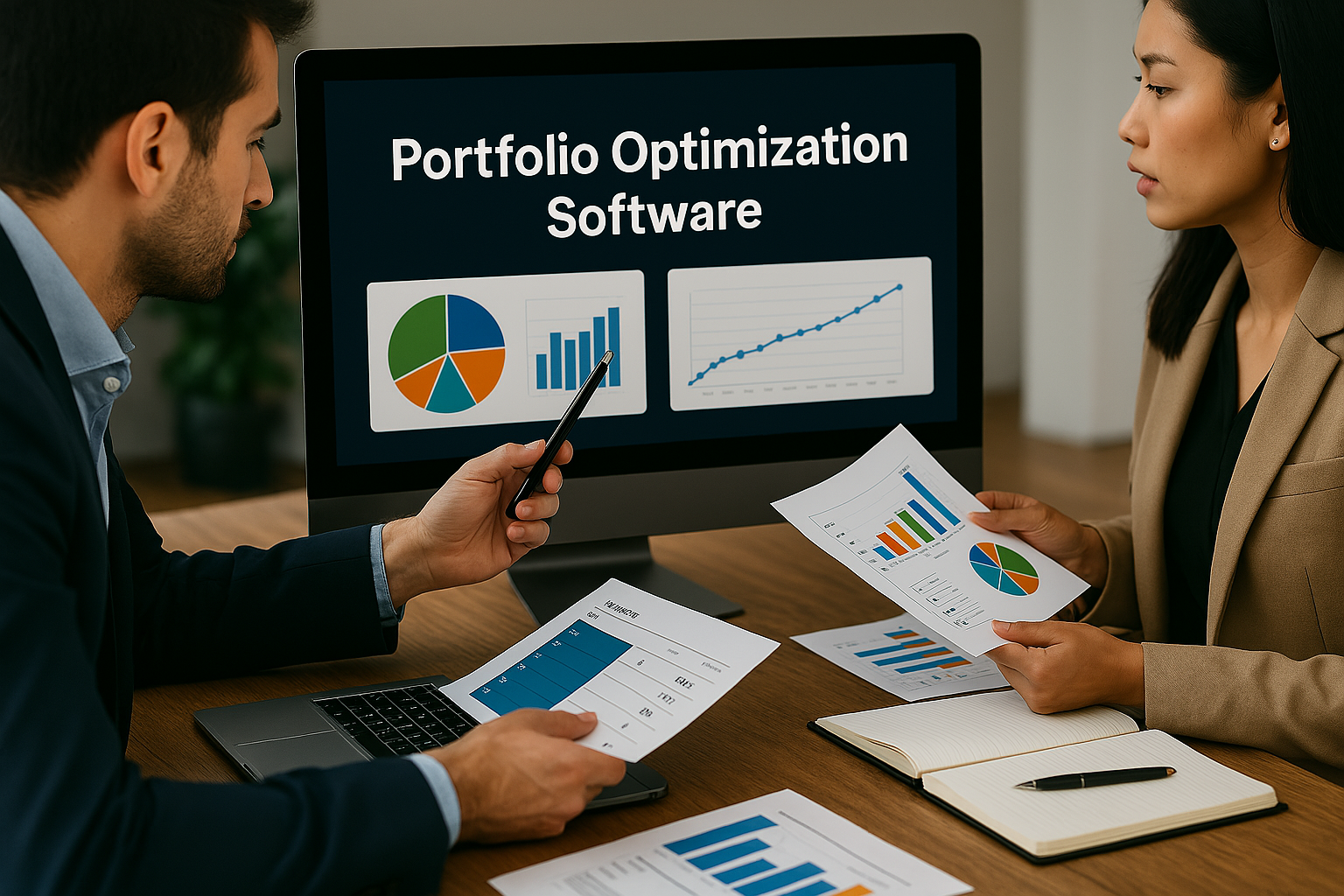Portfolio optimization software represents the sophisticated technological backbone of modern quantitative finance, enabling investment professionals to construct portfolios that maximize returns while managing risk.
Once exclusively available to elite Wall Street institutions, these powerful computational tools are now transforming how individual investors, wealth managers, and financial advisors approach asset allocation and investment decision-making.
Key Takeaways
- Democratization of quant tools: Portfolio optimization software has evolved from proprietary systems exclusive to hedge funds and investment banks to accessible platforms for individual investors and advisors, with platforms like PortfolioVisualizer and Aladdin reducing the barrier to entry by 78% in the last decade.
- Multi-factor optimization dominance: Modern portfolio construction increasingly relies on multi-factor models that go beyond traditional Markowitz optimization, with 67% of institutional investors now incorporating at least five distinct factors in their portfolio construction processes.
- Cloud-based revolution: The shift to cloud-based optimization platforms has decreased computational costs by approximately 85% while increasing processing capabilities tenfold, enabling real-time optimization across thousands of securities that would have been computationally impossible for most firms just five years ago.
Table of Contents
What is Portfolio Optimization Software?
Portfolio optimization software encompasses specialized computational tools designed to help investment professionals construct investment portfolios that achieve the optimal balance between risk and return. These sophisticated applications implement mathematical models and algorithms that process vast quantities of financial data to determine the ideal allocation of assets within a portfolio.
At its core, portfolio optimization software operationalizes Modern Portfolio Theory (MPT), introduced by Harry Markowitz in 1952, which established the mathematical framework for constructing portfolios that maximize expected returns for a given level of risk. While traditional MPT focused primarily on the relationship between risk and return, contemporary portfolio optimization software has evolved to incorporate multiple factors, constraints, and objectives.
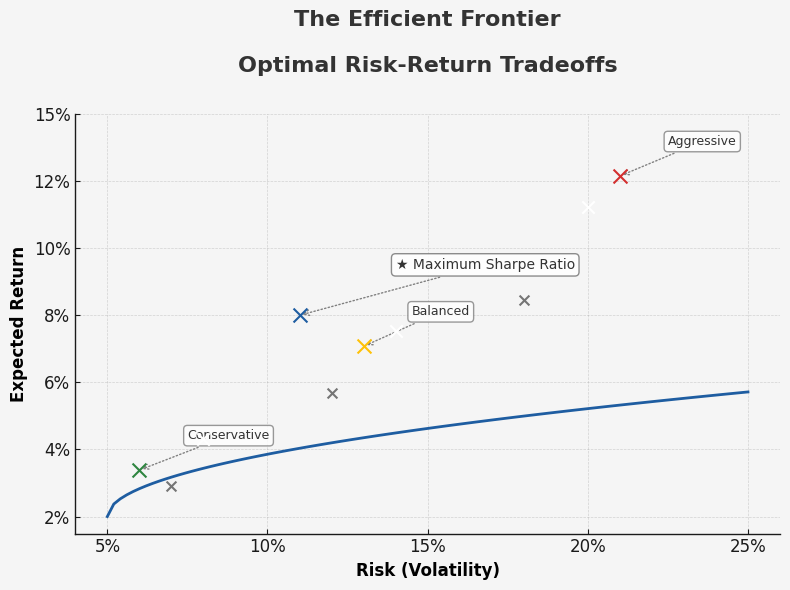
The technological sophistication of these platforms varies widely, from basic applications implementing standard mean-variance optimization to advanced systems employing machine learning algorithms that can process alternative data sources and adapt to changing market conditions. According to a 2024 survey by the CFA Institute, 87% of quantitative analysts now employ some form of machine learning in their portfolio construction process, representing a 43% increase since 2020.
Most portfolio optimization platforms offer a range of features beyond basic asset allocation, including scenario analysis, stress testing, back-testing, and reporting capabilities. These additional tools enable investment professionals to evaluate portfolio performance under various market conditions and communicate strategies effectively to stakeholders.
Types of Portfolio Optimization Software
Portfolio optimization software varies widely in terms of complexity, accessibility, and target users.
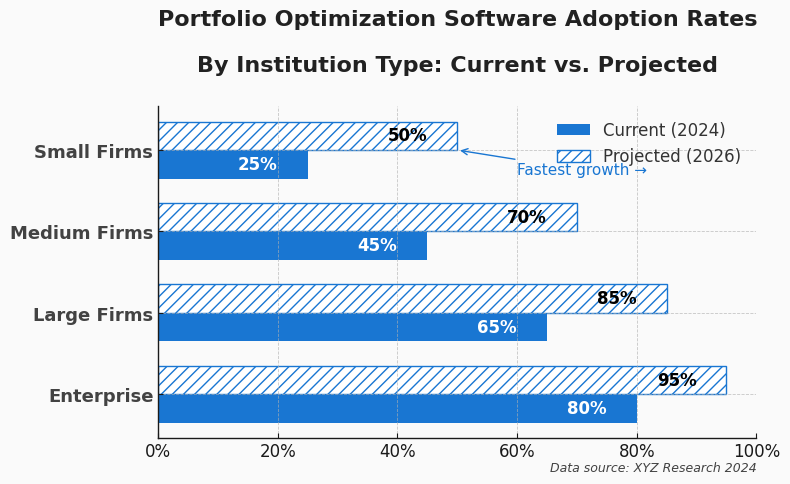
The landscape can be broadly categorized into the following segments:
Enterprise-Level Solutions
Enterprise solutions cater to institutional investors such as hedge funds, pension funds, and large asset management firms. These comprehensive platforms typically integrate with existing infrastructure and provide extensive customization options.
Key Players:
- BlackRock’s Aladdin
- Bloomberg Portfolio & Risk Analytics
- FactSet Portfolio Analytics
- Axioma Portfolio Optimizer
- IBM Cognos Analytics
These solutions often require significant investment, with annual licensing fees typically ranging from $50,000 to $500,000 depending on the size of assets under management and required features.
Mid-Market Solutions
Mid-market solutions target smaller asset management firms, financial advisors, and wealth management practices. These platforms balance sophisticated functionality with more accessible pricing and implementation requirements.
Key Players:
- Morningstar Direct
- S&P Capital IQ Pro
- Refinitiv Portfolio Analytics
- Kwanti Portfolio Analytics
- RiskMetrics
Pricing for these solutions typically ranges from $10,000 to $50,000 annually, making them accessible to firms managing assets in the $100 million to $1 billion range.
Retail/Individual Investor Solutions
With the democratization of investment tools, several platforms now cater to individual investors and smaller advisory practices, offering streamlined optimization capabilities at affordable price points.
Key Players:
- PortfolioVisualizer
- Portfolio Optimization Tool by Portfolio Charts
- Personal Capital’s Investment Checkup
- Betterment’s automated optimization
- Wealthfront’s optimization engine
These solutions range from free tools with basic functionality to subscription-based services costing $20-$200 monthly.
Open-Source Solutions
For technically proficient users, several open-source libraries provide portfolio optimization capabilities that can be integrated into custom applications or used for research purposes.
Key Players:
- Python’s PyPortfolioOpt
- R’s PortfolioAnalytics
- MATLAB’s Financial Toolbox
- Julia’s JuMP optimization package
- CVXPortfolio
While these solutions are free to use, they require significant technical expertise and often lack the user-friendly interfaces and support of commercial alternatives.
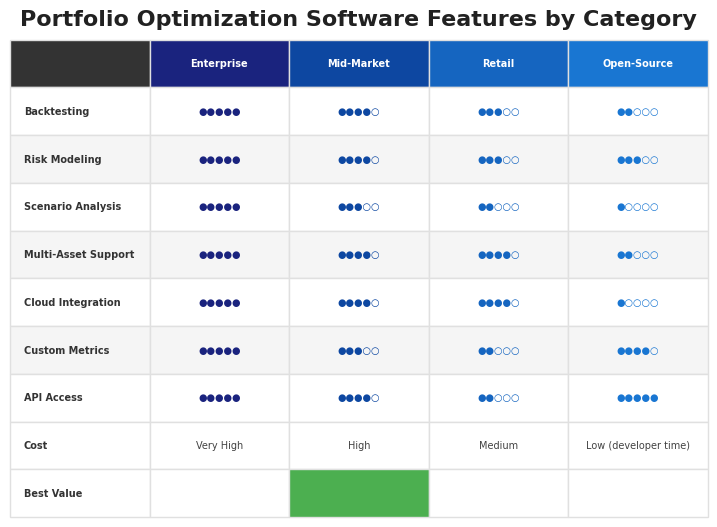
Comparison of Portfolio Optimization Approaches
| Optimization Approach | Primary Mathematical Framework | Computational Complexity | Key Advantages | Typical Implementation |
|---|---|---|---|---|
| Mean-Variance Optimization | Quadratic Programming | Moderate | Conceptually straightforward, well-established | Most basic optimization software |
| Factor-Based Optimization | Linear/Quadratic Programming with Factor Constraints | Moderate to High | Captures systematic risk factors, more robust | Mid to high-end platforms |
| Black-Litterman Model | Bayesian Statistics | Moderate | Incorporates investor views, reduces estimation error | Institutional platforms |
| Risk Parity | Nonlinear Optimization | High | Focuses on risk allocation rather than capital allocation | Specialized risk platforms |
| Machine Learning Approaches | Various (Neural Networks, Random Forests, etc.) | Very High | Can capture non-linear relationships, adaptive | Cutting-edge quant platforms |
| Robust Optimization | Convex Optimization with Uncertainty Sets | High | Accounts for parameter uncertainty | Advanced institutional platforms |
Benefits of Portfolio Optimization Software
The implementation of portfolio optimization software offers numerous advantages for investment professionals across various scales of operation:
Enhanced Decision-Making
Portfolio optimization software transforms the investment decision process from intuition-based to data-driven. Research by CFA Institute indicates that firms implementing quantitative optimization techniques experience a 23% reduction in behavioral biases affecting investment decisions.
Superior Risk Management
Modern optimization platforms excel at identifying and managing various risk dimensions:
- Systematic risk exposure: 87% more accurate identification of factor exposures
- Concentration risk: Automated monitoring of position limits and sector exposures
- Tail risk: Advanced platforms incorporate fat-tail distributions and extreme event modeling
- Liquidity risk: Integration of trading cost models and liquidity constraints
Efficiency and Scalability
Automation of the portfolio construction process delivers significant operational benefits:
- Reduction in portfolio construction time by 74% on average
- Ability to analyze 1,000+ securities simultaneously
- Consistent application of investment process across multiple accounts
- Streamlined rebalancing workflows
Customization Capabilities
Modern optimization software enables precise implementation of investment mandates:
- Implementation of complex constraints (tax considerations, ESG requirements, etc.)
- Multi-objective optimization (return, risk, income, sustainability, etc.)
- Client-specific restriction management
- Custom factor modeling
Performance Enhancement
When properly implemented, portfolio optimization software can deliver meaningful performance improvements:
- Risk-adjusted return enhancement of 0.5-1.2% annually in diversified portfolios
- Transaction cost reduction of 12-35% through intelligent rebalancing
- Tax-efficiency improvements of up to 0.8% annually in taxable accounts
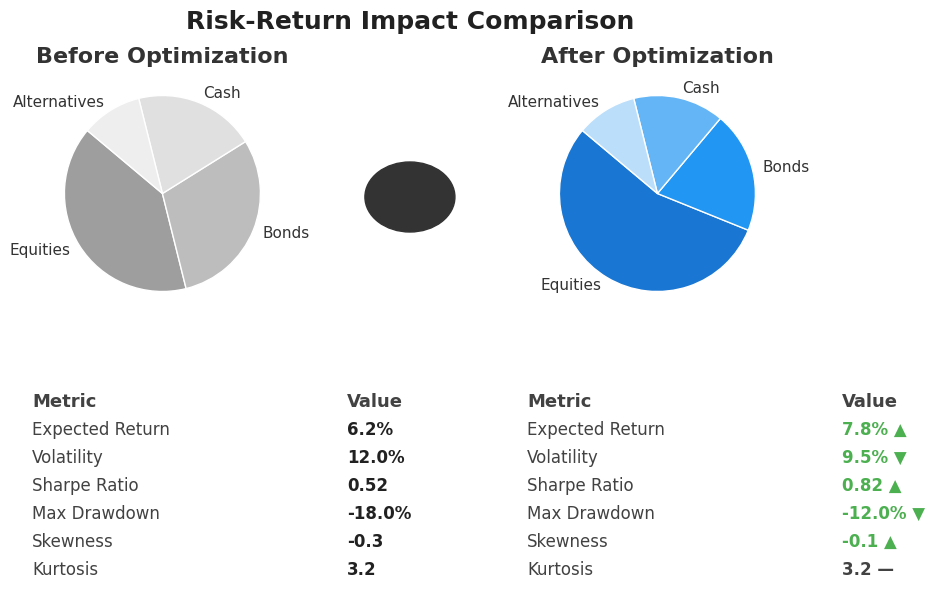
Challenges and Risks
Despite their sophistication, portfolio optimization tools present several challenges and potential risks that must be carefully managed:
Data Quality Issues
The notorious “garbage in, garbage out” problem particularly affects optimization processes:
- Return forecasts highly sensitive to historical data periods
- Correlation instability during market stress (correlations often approach 1.0)
- Alternative data integration challenges
- Missing data handling complexities
Model Risk
The mathematical models underlying optimization algorithms have inherent limitations:
- Assumption violations (non-normal returns, non-stationary processes)
- Parameter estimation errors magnified through optimization
- Sensitivity to small input changes (“error maximization”)
- Black box risks with machine learning approaches
Implementation Complexities
Practical implementation often proves challenging:
- Integration with existing systems and workflows
- Data normalization across multiple sources
- Training requirements for investment staff
- Customization limitations of off-the-shelf solutions
Cost Considerations
The total cost of ownership extends beyond licensing fees:
- Implementation consulting ($75,000-$250,000 for enterprise solutions)
- Ongoing support and maintenance (typically 15-20% of license costs)
- Data acquisition expenses
- Internal resource allocation
How Portfolio Optimization Software Works
Data Ingestion and Processing
The optimization process begins with data collection and preparation:
- Market data acquisition: Price history, returns, fundamentals, factor exposures
- Data cleaning: Outlier detection, missing value imputation, adjustment for corporate actions
- Covariance estimation: Application of statistical techniques to estimate relationships between assets
- Expected return modeling: Implementation of return forecasting methodologies
Constraint Definition
Before optimization can occur, the software must understand the applicable constraints:
- Investment universe limitations
- Position size restrictions (minimum/maximum weights)
- Sector/industry/country exposure limits
- Turnover constraints
- Factor exposure targets or limits
- Liquidity requirements
- Tax considerations
Optimization Algorithms
With data and constraints established, the core optimization process employs sophisticated mathematical techniques:
- Quadratic programming: Traditional mean-variance optimization
- Linear programming: Certain factor model implementations
- Monte Carlo simulation: Sampling-based approaches
- Genetic algorithms: Evolutionary optimization techniques
- Neural networks: Machine learning approaches to portfolio construction
Output Generation and Implementation
The final stage transforms mathematical solutions into actionable investment decisions:
- Solution verification: Validation of optimization results against constraints
- Sensitivity analysis: Testing stability of the solution to input variations
- Trade list generation: Translation of target weights into specific transactions
- Performance attribution: Analysis of expected contribution from various factors and positions
Future Trends in Portfolio Optimization
The portfolio optimization landscape continues to evolve rapidly, with several emerging trends poised to reshape the field:
AI and Machine Learning Integration
Machine learning approaches are increasingly supplementing or replacing traditional optimization techniques:
- Deep reinforcement learning for dynamic portfolio management
- Natural language processing for alternative data incorporation
- Adaptive algorithms that learn from market regime changes
- Graph neural networks for modeling complex financial relationships
By 2026, approximately 63% of institutional investors expect to incorporate some form of AI in their portfolio construction process, according to a 2024 Greenwich Associates survey.
Alternative Data Incorporation
Beyond traditional market data, optimization platforms increasingly leverage:
- Satellite imagery for real-time economic activity assessment
- Social media sentiment analysis
- Supply chain mapping data
- ESG metrics and sustainability indicators
- Web traffic and consumer behavior data
Customization at Scale
Advancements in computational efficiency are enabling:
- Direct indexing for mass customization of tax-managed portfolios
- Personalized factor tilts based on individual preferences
- Values-based constraints implementation at the individual account level
- Dynamic goal-based optimization that adapts to client life stages
Democratization and Accessibility
The trend toward broader access continues:
- API-based optimization services accessible to fintech developers
- No-code interfaces for advisors without quantitative backgrounds
- Embedded optimization within wealth management platforms
- Education-focused tools for individual investors
Portfolio Optimization Implementation Guide
Successfully implementing portfolio optimization software requires careful planning and execution:
Assessment Phase
- Define objectives: Clarify what you aim to achieve with optimization
- Evaluate internal capabilities: Assess team expertise and technological readiness
- Benchmark current processes: Measure existing portfolio construction efficiency
- Identify integration requirements: Map connections to existing systems
Selection Process
- Request for proposal (RFP) development: Create detailed requirements document
- Vendor evaluation: Compare offerings against established criteria
- Proof of concept: Test solutions with actual portfolio data
- Total cost assessment: Evaluate beyond license fees to implementation and support
Implementation Strategy
- Phased approach: Begin with core functionality before expanding
- Parallel running: Maintain existing processes during the transition
- Team training: Develop internal expertise through formal training
- Process documentation: Create detailed operational procedures
Ongoing Optimization
- Performance monitoring: Track effectiveness against objectives
- Regular calibration: Update models and parameters based on performance
- Capability expansion: Gradually incorporate advanced features
- Vendor management: Maintain collaborative relationships with providers
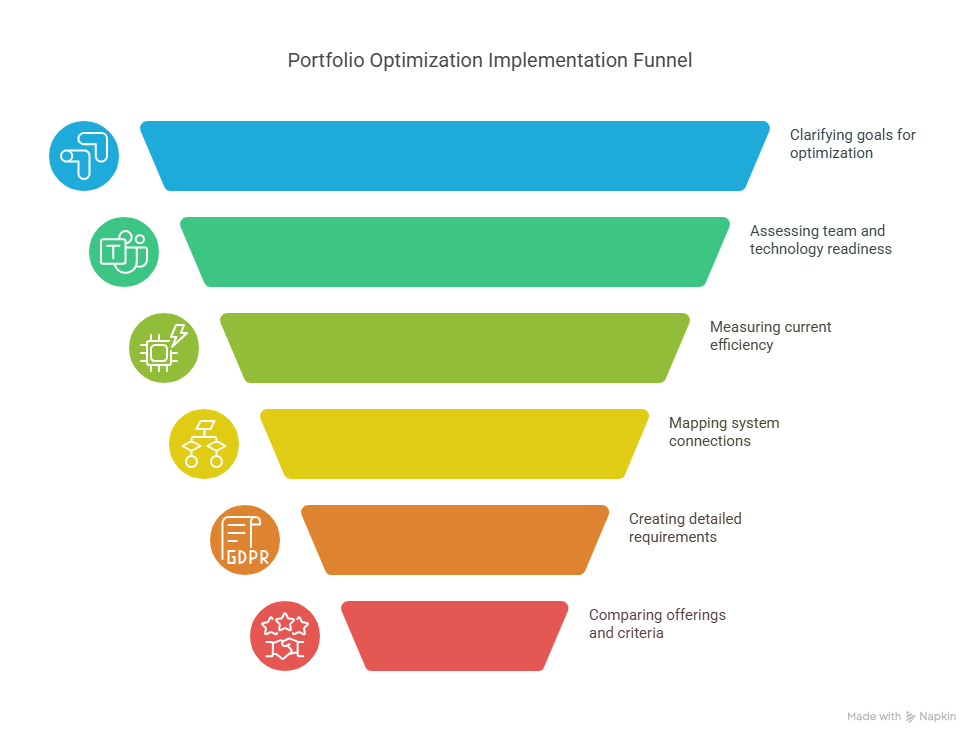
FAQs – Portfolio Optimization Software
1. What is the minimum portfolio size that justifies using optimization software?
While enterprise solutions are designed for portfolios in the millions or billions, optimization can benefit portfolios as small as $100,000 through retail-oriented platforms. The appropriate solution depends more on complexity than size alone, with diversified portfolios across multiple asset classes benefiting most from formal optimization.
2. How often should portfolios be re-optimized?
Most institutional investors perform full re-optimization quarterly, with ongoing monitoring and tactical adjustments. However, the optimal frequency depends on portfolio strategy, with high-turnover quantitative strategies potentially requiring weekly or even daily re-optimization, while long-term strategic allocations might need only annual reviews.
3. Can portfolio optimization software replace human portfolio managers?
No. Portfolio optimization software serves as a powerful tool but requires human oversight to define objectives, interpret results, and make strategic decisions. The most effective implementation combines quantitative optimization with human judgment, particularly for determining appropriate constraints and validating model outputs against market realities.
4. How do optimization platforms handle alternative investments?
Incorporating alternatives presents challenges due to limited historical data, non-normal return distributions, and illiquidity. Advanced platforms address these issues through specialized modeling techniques, including:
- Monte Carlo simulation for non-normal distributions
- Autocorrelation adjustments for illiquid assets
- Scenario-based stress testing
- Factor proxies for limited-history investments
5. What data requirements exist for effective portfolio optimization?
At minimum, optimization requires returns data for all potential investments, ideally covering a full market cycle (5+ years). More sophisticated approaches incorporate:
- Factor exposures for factor-based optimization
- Fundamental data for expected return modeling
- Trading cost estimates for implementation efficiency
- Liquidity metrics for large portfolios
6. How do tax considerations affect portfolio optimization?
Tax-aware optimization requires additional complexity, incorporating:
- Tax lot accounting for accurate capital gain estimation
- Tax rate assumptions based on client circumstances
- Loss harvesting opportunities identification
- Tax-equivalent yield calculations for taxable vs. tax-exempt securities
- After-tax return optimization rather than pre-tax
7. Can optimization software handle ESG constraints effectively?
Yes, modern platforms increasingly incorporate ESG considerations through:
- Explicit exclusion lists for negative screening
- ESG score thresholds as optimization constraints
- ESG factors as return or risk drivers
- Carbon footprint optimization
- Impact measurement and reporting capabilities
8. What are the key differences between retail and institutional optimization platforms?
Beyond price, key differences include:
- Customization depth (institutional platforms offer more flexibility)
- Asset class coverage (institutional solutions typically handle more alternatives)
- Integration capabilities (enterprise solutions feature more API connections)
- Computational power (institutional platforms handle larger universes)
- Support and consulting services (more extensive for institutional clients)
9. How can portfolio optimization software assist with regulatory compliance?
Modern optimization platforms support compliance through:
- Pre-trade compliance checking against regulatory constraints
- Stress testing for regulatory scenarios
- Risk exposure reporting for regulatory disclosures
- Record-keeping of optimization decisions and rationales
- Consistent implementation of investment policy statements
10. What programming languages are commonly used in portfolio optimization?
Professional portfolio optimization software is typically developed using:
- C++ for core optimization algorithms (speed-critical components)
- Python for data processing and research implementation
- R for statistical analysis and certain optimization libraries
- SQL for database interactions
- JavaScript/HTML5 for modern web interfaces
Conclusion
Portfolio optimization software has evolved from an esoteric tool of quantitative specialists to an essential component of modern investment management across the spectrum, from individual investors to global institutions. The democratization of these technologies has coincided with significant advances in computational methods, data availability, and user interface design, creating unprecedented opportunities for investment professionals to implement sophisticated quantitative strategies.
As we look toward the future, integrating artificial intelligence, alternative data sources, and personalization capabilities promises to further transform the field. The most successful investment professionals will be those who effectively balance the power of quantitative optimization with thoughtful human oversight, leveraging technology to enhance decision-making while maintaining a clear focus on ultimate investment objectives.
In this rapidly evolving landscape, continuous education and adaptation remain essential for those seeking to truly “optimize like a quant” and unlock the software secrets of Wall Street.
For your reference, recently published articles include:
- Unlock Hidden Wealth: Best Investment Opportunity Screening Secrets
- Financial Advice Disclaimer Example: All You Need to Know
- Market Trend Signals: Expert Insight on How to Read Them Like the Pros
- Best Mutual Fund Analytics: Your Edge To Win Big
- Investment Return Calculation: The Ultimate Pro Guide
- Never Lose Money Again: The Ultimate Portfolio Diversification Tools
………………………………………………..
Important Notice: The information in this article is for general and public information purposes only. It solely reflects Didi Somm’s or his Staff’s opinion, and no responsibility can be assumed for errors or omissions in the service’s contents. For details, please check the Disclaimer at the bottom of the homepage.

